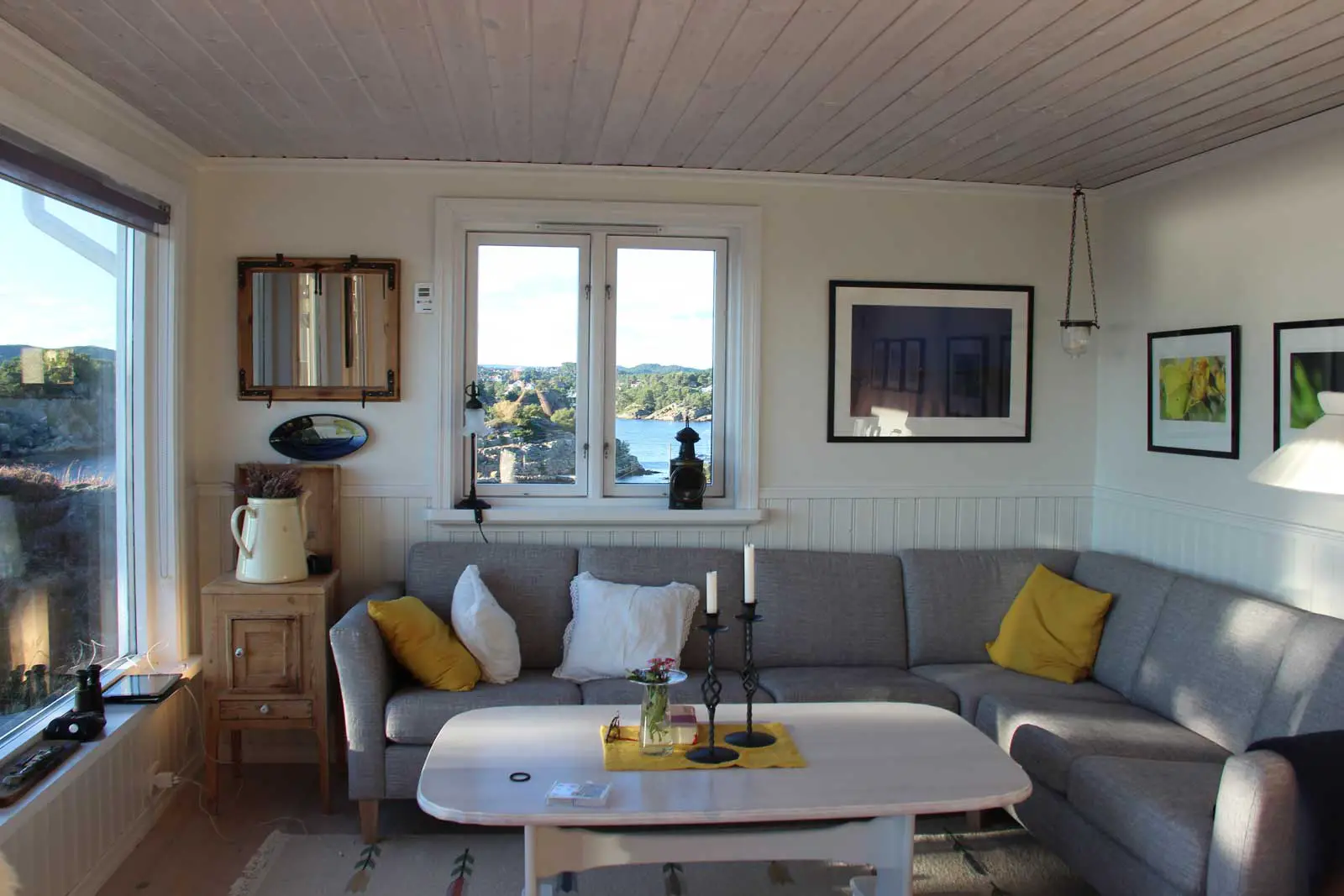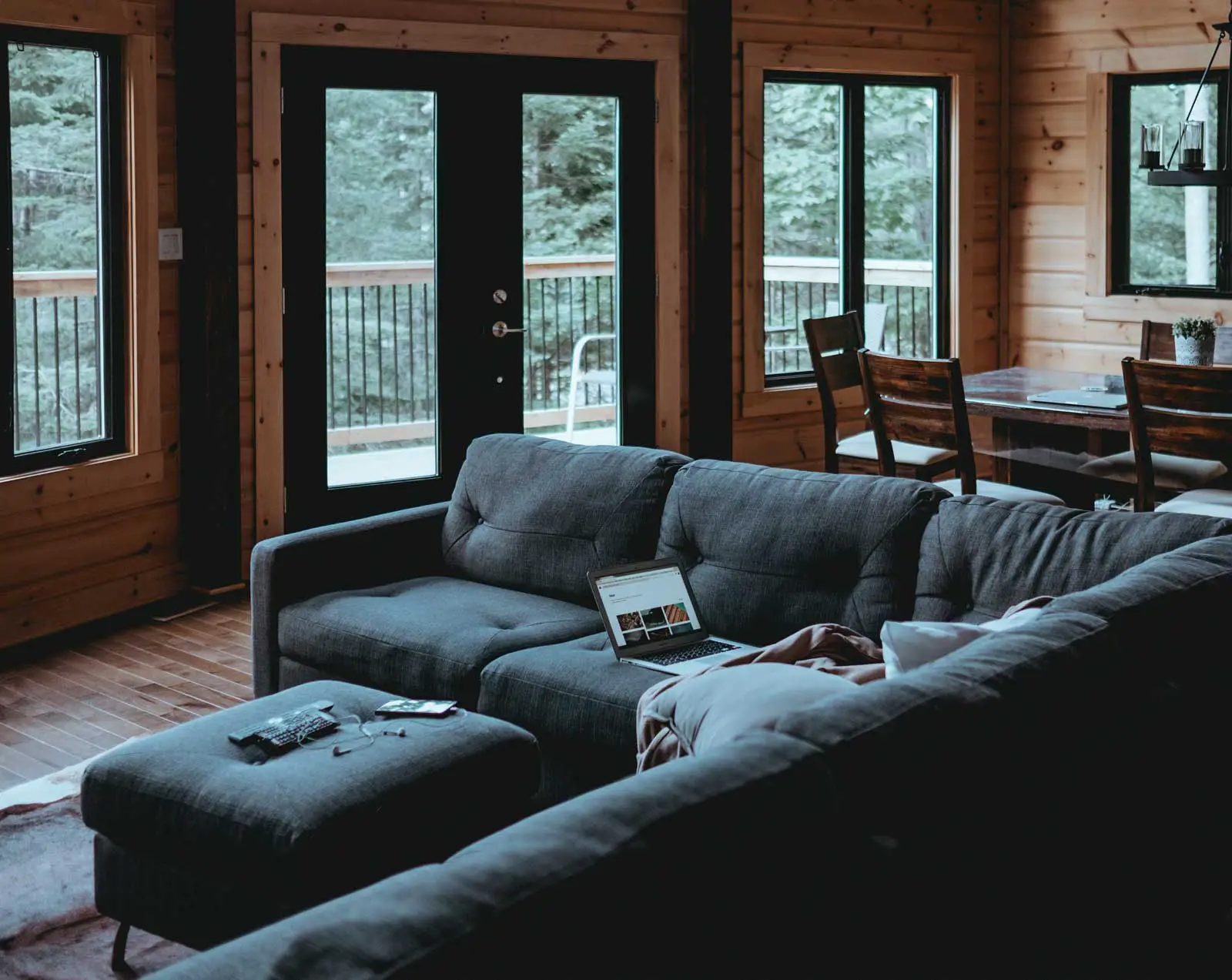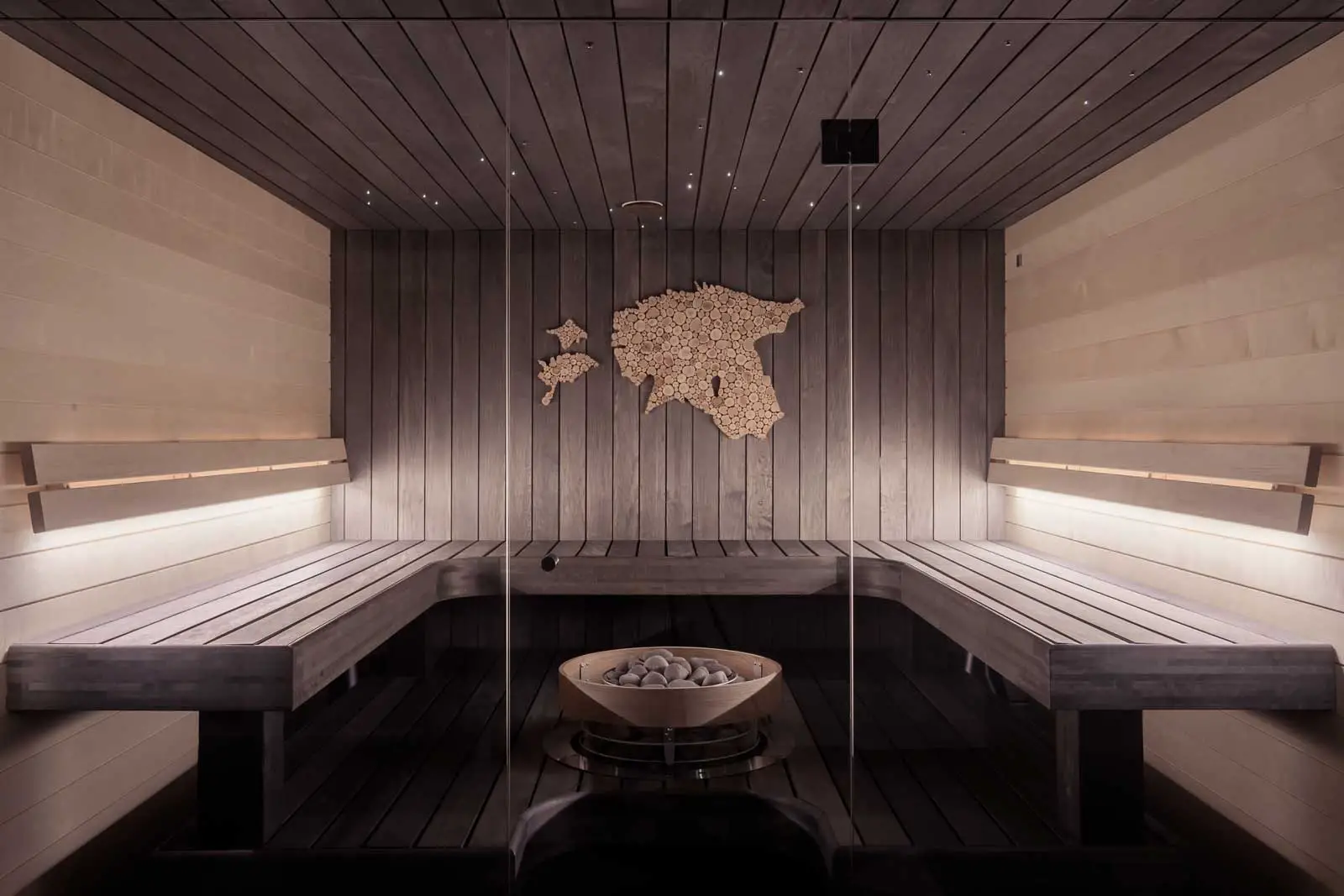You’re likely familiar with shiplap and tongue-and-groove siding, but what are they exactly?
Shiplap is a type of wall paneling with overlapping wooden boards that fit together like puzzle pieces.
Tongue-and-groove is similar, but the boards fit together at an angle. Both are popular types of wall paneling used in modern decorating styles.
But which one is right for you and your project?
Shiplap has become especially popular with more contemporary looks, as its clean lines create an understated backdrop for any space. It can also be painted or stained for a personalized touch, making it even more versatile!
Tongue-and-groove is generally more traditional looking, which makes it ideal for classic and rustic spaces. You can find both types of paneling in a variety of different woods; all you need to do is pick the one that fits your style best!
In this article, I’ll help explain (and differentiate) these two design elements, so that you can decide which one suits your vision best.
By the way – before we get too far along here, if you want to connect with other homeowners and builders and get more great ideas for your home to make your space the best join my free private Facebook group, Remodel Reality here.
 Main differences between shiplap & tongue and groove
Main differences between shiplap & tongue and groove
There are a few main differences between shiplap and tongue-and-groove wall paneling. The most obvious is the profile of each piece: shiplap boards have a rabbet cut at either end, while tongue-and-groove boards also have a v-cut on the edges that match up to similar profiles. This allows them to fit together more tightly than shiplap.
The purpose of these notches is also different. Shiplap board’s rabbet cuts act like tiny dams, preventing water from getting into the seams between boards, while tongue-and-groove panels use the notches to achieve an airtight seal when installed. This makes tongue-and-groove siding more suitable for humid rooms like bathrooms or laundry rooms where extra waterproofing is needed.
Shiplap vs. Tongue Groove Comparison:
| Feature | Shiplap | Tongue and Groove |
|---|---|---|
| Profile | L-shaped notches on edges | T-shaped projection and U-shaped indentation |
| Ease of Installation | Easier | Harder |
| Available Materials | Wood, fiber cement, vinyl, metal | Wood, engineered wood, fiber cement, metal |
| Ideal Climate | Low humidity and high-heat climates | Cold climates |
| Cost | Cheaper | More Expensive |
| Uses | Entire walls, accent walls, backsplashes, fireplace surrounds, ceiling paneling | Entire walls, accent walls, backsplashes, fireplace surrounds, ceiling paneling |
| Versatility | More versatile | Less versatile |
| Final Cost | Depends on material and design | Depends on material and design |
| Sustainability | Depends on material choice | Depends on material choice |
| Location | Primarily used inside | Can be used inside or outside (climate dependent) |
| Popular Interiors | Bedrooms, kitchens, modern farmhouse | Bedrooms, kitchens, modern farmhouse |
| Strength | L-shaped notches | Interlocking notches and indents |
| Nail Holes | Visible | Visible |
| Color/Finish | Can be stained or painted | Can be stained or painted |
| Space between Boards | Depends on preference | Depends on preference |
| Popularity | Timeless, popular in recent years | Timeless, popular in recent years |
| Choice Factors | Budget, climate, personal preference | Budget, climate, personal preference |
| Exterior Cladding | Better for rainy and hot/dry climates | Better for colder climates |
| Recovery Rate | Higher for exterior cladding | Higher for exterior cladding |
| Interior Finishes | Depends on personal taste and budget | Depends on personal taste and budget |
| Style | Timeless, goes well with classic design elements | Timeless, goes well with classic design elements
|
 Materials & Costs
Materials & Costs
When choosing either shiplap or tongue-and-groove wall panels, you’ll have a variety of material options to choose from. Shiplap is available in both natural wood varieties like pine and cedar and synthetic materials like MDF or plywood. Tongue-and-groove boards generally come in natural wood but can also be purchased as pre-primed for painting, which saves time and effort on the installation process.
As far as cost is concerned, it’s difficult to give a definitive answer because there are many factors that affect pricing such as the type of material chosen, size of the paneling, and current market prices. Generally speaking, however, tongue-and-groove siding tends to be more expensive than shiplap due to its increased complexity during installation.
Cost Comparison Table: Shiplap vs. Tongue and Groove
| Material | Cost Per Square Foot | Installation Cost | Installation Method |
|---|---|---|---|
| Shiplap Wood Panels | $2.5 to $7.00 | $2.5 to $7.00 per sqft | Hire a handyman |
| Shiplap Peel and Stick Fabric Wallpaper | $3.50 | $0 | DIY |
| Pine Tongue and Groove Plank | $3 to $4 | $1 to $4 per sqft | Hire a professional |
| Tongue and Groove (Other Wood Species) | $2 to $9 | $1 to $4 per sqft | Hire a professional |
Ideal Climates for Shiplap vs. Tongue & Groove
If you’re planning on using shiplap or tongue-and-groove for outdoor applications, then climate should be considered. The type of wood used in the panels and its level of humidity will affect how well it holds up against elements like rain, snow, and wind.
Cedar is a popular choice for both shiplap and tongue-and-groove siding but it may not be suitable for wet climates because of its susceptibility to rot.
For dry climates, both shiplap and tongue-and-groove are appropriate options. Shiplap is great for areas with high winds because it makes a tighter seal between each board which keeps air from infiltrating into the home more effectively. As far as moisture is concerned, tongue-and-groove boards are better since they form a continuous barrier that helps keep out water.
 Versatility and Design for Shiplap vs. Tongue & Groove
Versatility and Design for Shiplap vs. Tongue & Groove
Shiplap and tongue-and-groove can be used to create entire walls, accent walls, backsplashes, fireplace surrounds, and ceiling panelling. Both materials are highly versatile and can be installed horizontally or vertically to add interest to a design. For both applications, the number of boards needed will depend on the size of the room or area being covered.
Shiplap boards are easy to install horizontally or vertically due to their uniform shape, while tongue-and-groove boards must be cut in order to fit into place in a vertical direction. Horizontally oriented boards provide a more classic look with clean lines while vertically oriented boards add texture and visual interest by creating shadows between each board. No matter which direction it’s applied in, shiplap and tongue-and-groove both offer an attractive design element that can elevate any space.
Strength and Durability for Shiplap vs. Tongue & Groove
When it comes to strength, shiplap and tongue-and-groove are both tried and true options. Shiplap is often seen as the stronger of the two, with overlapping edges that provide extra protection and stability. On the other hand, tongue-and-groove offers a tighter connection due to its interlocking system, which makes it more difficult for insects or moisture to come in through the seams.
Both materials are also known for their durability and low maintenance needs. They only require periodic re-staining or painting to maintain their appearance. In addition, shiplap and tongue-and-groove siding can both withstand extreme weather conditions like high winds or heavy rainfall without degrading over time.
Pros & Cons of Shiplap
Shiplap is an attractive and versatile siding material that offers a wide range of benefits for homeowners. One of the biggest advantages of shiplap is its superior strength and durability, which makes it ideal for use in homes in areas prone to extreme weather. Additionally, the overlapping boards provide extra protection from the elements, which can help reduce energy costs over time.
In terms of aesthetics, shiplap has a rustic charm that is perfect for any home. The boards can be stained or painted to create a unique look that fits any aesthetic. Moreover, shiplap is relatively easy to install and requires minimal maintenance over time.
However, there are also some drawbacks to using shiplap as your exterior siding material. It may require more materials than traditional siding options, which can drive up costs significantly. Wood also has a tendency to warp or rot over time if not properly maintained, so it’s important to check on it regularly and make repairs as needed.
Shiplap Pros & Cons:
| Pros | Cons |
|---|---|
| Easier to install than tongue and groove | Not as strong or secure as tongue and groove |
| Available in various materials | Climate should be considered for outdoor applications |
| Cheaper to install | Not as durable as tongue and groove |
| Versatile | May require more work to get rows to lie flat |
| Can be stained or painted to match home’s design | Climate should be considered for outdoor applications |
| Ideal for low humidity and high-heat climates | Nail holes may be visible |
| Timeless and goes well with classic design elements | Not as durable as tongue and groove |
| Can create a modern or contemporary look | |
| Ideal for DIY installation | |
| Better insulation than shiplap | |
| Can be used for entire walls, accent walls, backsplashes, fireplace surrounds, and ceiling paneling | Complexities involved in installation |
| Can be made from wood, engineered wood, fiber cement, metal, and other materials |
Pros & Cons of Tongue & Groove
Tongue and groove interlocking paneling is an ideal choice for homeowners looking to add a vintage charm to their interior spaces. With tongue-and-groove paneling, the boards fit securely together which makes it stronger and more secure than other types of siding materials.
Additionally, tongue-and-groove paneling offers better insulation capabilities than other materials which makes it a great option for colder climates. The panels can also be made from various materials, including wood, metal, fiber cement, and vinyl so you have options when it comes to achieving the look you want for your space.
While tongue-and-groove may have its benefits, it is typically more expensive than other types of paneling. It can also be harder to install, so DIYers may need additional help or expertise if they choose this option. Additionally, the final cost of installation will depend on the type of wood being used, the size of the room and location of installation, as well as any additional methods that may need to be used such as waterproofing or sealing.
On the flip side, interlocking mechanism makes tongue-and-groove easier to maintain and can add an airy look and feel to any interior space such as bedrooms, kitchens or modern farmhouse style rooms.
Tongue & Groove Pros & Cons:
| Pros | Cons |
|---|---|
| Interlocking mechanism makes it stronger and more secure | More expensive than other types of paneling |
| Better insulation capabilities for cold climates | Harder to install and less DIY-friendly |
| Can be made from various materials, including wood, metal, fiber cement, and vinyl | Climate should be considered for outdoor applications |
| Adds a vintage charm and airy look to a space | Final cost depends on type of wood, room size, location, and installation method |
| Ideal for interior walls such as bedrooms, kitchens, and modern farmhouse style interiors | |
| Interlocking mechanism makes it easier to maintain |
Next Steps
Want to join others who are creating the most amazing home redesigns & renovations and get more tips, tricks and hacks on how to make your home the best it can be?
Join my brand new free private Facebook group, Remodel Reality to connect with other people like you to make your space the best!






